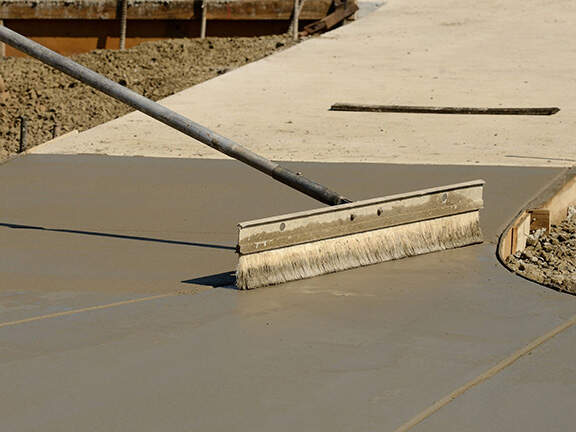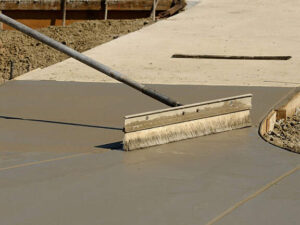Concrete is considered as the second-most used substance in the entire globe, behind water. Today’s billion-dollar concrete market is crucial for construction as its availability and versatility have turned it as an essential part of modern structures. Curing concrete is a major part of guaranteeing that concrete will maintain its inherent durability and stability.
Curing is the primary action typically taken by contractors in order to maintain temperature and moisture conditions in freshly and newly placed concrete. Moreover, contractors also take other important actions for the overall project’s success. A construction schedule software is one of the advanced technologies being deployed and used today in the industry and this particular necessity has been taken into action in the workplace.
In this blog, the importance, role, and functions of curing concrete will be further discussed – let’s take a look now on why it has become so essential.
The Role & Importance of Concrete Curing
Note that when speaking about curing concrete, it directly refers to the process of controlling the moisture loss from the concrete that has already been set down. The essential concrete curing time is usually within 28 days of the concrete presently being placed.
Curing plays a very critical role in the durability and strength development of concrete. This process will immediately occur after concrete finishing and placing and usually involves the maintenance for desired temperature and moisture conditions, both at the near and in-depth surface, for an extended period of time. Concrete that is properly cured is proven to be having an adequate amount of moisture that is meant for the continued development of strength, hydration, resistance to thawing and freezing, volume stability, scaling resistance, and abrasion. While curing has played a vital part in the process, the best construction management software like Pro Crew Schedule plays a vital role as well. The curing process itself will be best managed, monitored, and tracked using this software solution. Even the entire crew is efficiently well-supervised using this tool.
The actual length of curing time varies dependently on the following factors:
· Particular specified strength
· Ambient weather conditions
· The shapes and sizes of the concrete members
· Mixture proportions
· Future exposure conditions
In the first place, concrete contractors are bound to focus more on this process and take it also as one of many considerations. Ignoring or neglecting this process just because believing it was unnecessary caused more severe issues ahead. Curing is a critical step, and for contractors to make sure that the team doesn’t miss any of the processes, including this, a project management software is undoubtedly huge in monitoring, scheduling, tracking, and many more.
So Why Cure Concrete?
The components of the concrete are what make the process extremely critical and timing. For many instances, water and cement undergo a chemical reaction that will bind gravel and sand altogether in order to create concrete. However, it is crucial to prepare a proper amount of water intended for that mixture amidst the process. If the water will evaporate too fast, there’s still concrete, although it could be far less durable and immediately crack. While this is repeatedly happening in any given situation, there is a particularly huge risk for any concrete projects in arid places and areas with plenty of sunlight exposure. Speaking of risks for concrete projects, not being updated with any latest builder trends nowadays can also lead to consequences for construction professionals. It is through keeping and staying the latest updates about the trend that competitiveness remained intact.
And this is where concrete curing will coming in. Amidst those initial 28 days right after the concrete is being installed, curing will either add more water to offset evaporation or attempt to slow down the evaporation to keep more water from the inside. For contractors, in order for them to efficiently monitor the entire curing process from start to finish, an application of a project scheduling management will be very advantageous in terms of handling and managing.
The 3 Main Functions of Concrete Curing
Before moving further, these functions must be properly applied and managed by concrete contractors and subcontractors. For contractors, not only they have to manage tasks but also to supervise the whole team. That is why they have to implement a construction crew management in order to achieve efficiency, uniformity, and team productivity during work.
1. During the early hardening process, to maintain mixing water in the concrete is a must-do
· Spaying and fogging
These two methods are commonly used just when the ambient temperatures are high above freezing while the humidity is low. Fogging is known for minimizing plastic shrinkage that will crack until when the concrete can attain the final set.
Immersion and Ponding
Ponding is commonly used to cure any flat surfaces effectively. There must be a presence of care in order to maintain the water temperature for curing at not more than 25 degrees Fahrenheit. And it should be cooler than the concrete so it can prevent cracking from happening due to thermal stresses. Immersion is typically used in the laboratory solely for test specimens for curing concrete.
· Saturated Wet Coverings
Any wet coverings saturated with water must be used after the concrete has already been adequately hardened to prevent surface damage. It must be necessarily kept wet constantly.
· Left in Place Forms
It is usually the left in place forms that provide satisfactory protection from moisture loss specifically for formed concrete surfaces. The forms are typically left in the place whenever possible for as long as the construction schedule permits. If the forms are being made from wood, it needs to be kept moist, particularly during dry and hot weather.
2. To reduce the loss of mixing water directly from the concrete surfaces
· The application of membrane-forming curing compounds
Curing compounds that are membrane-formed are commonly used to reduce or retard evaporation of moisture directly from the concrete. It can be either be translucent or clear and white pigmented.
· To cover concrete with an impermeable paper of plastic sheets
Impermeable plastic sheets and paper can be directly applied to meticulously wetted concrete. The concrete surface must be hard and firm enough in order to prevent surface damage against any placement activities.
3. To accelerate strength gain with the use of heat and additional moisture
· Heating coils
Coils that are heated are typically used as embedded elements quite near the surface of any concrete elements. The heating coils’ main purpose is to provide protection to concrete against freezing during on many instances of cold weathering concreting.
· Live steam
Live steaming at high-pressure and atmospheric steam in autoclaves is considered the two main steam curing methods. For live steam during the atmospheric temp, the steam temperature must be kept at a certain level of degrees Fahrenheit or perhaps lesser than the standard degree.
· Concrete blankets
These are typically used to insulate and cover concrete surfaces that are straightly subjected to freezing temperatures during the curing period. The concrete must be firm enough to prevent surface damages upon covering it with concrete blankets.
Additionally, for all concrete curing methods, the very objective is to prevent moisture loss from the barely exposed concrete areas. In actuality, the method of curing varies upon the nature of work as well as the atmospheric conditions. The following methods can be adopted:
· Covering the surfaces of concrete with burlaps or gunny bags
· Shading of any type of concrete works
· Concrete surface should be sprinkled with water
· Membrane curing
· Electrical curing
· Method of curing through Infra-Red Radiation
· Steam Curing
Several Reasons to Cure Concrete
Basically, there are a few reasons why concrete should be cured. Take a look below:
1. Improves microstructure
All material properties are straightly related to their respective microstructure. With curing, it is assisting the cement hydration reaction in order to steadily progress and will develop hydrate gel with calcium silicate.
2. Improves the durability of concrete
There are a good number of factors that affect the durability of concrete including porosity, permeability, and absorptivity. When concrete is well-cured, it can efficiently reduce drying and plastic shrinkage cracks, turning concrete more water tight.
3. Enhanced serviceability
Concrete that is permitted to dry out faster usually undergo substantial shrinkage at an early age. Insufficient curing usually contributes to the dusty and weaker surfaces having very poor abrasion resistance.
4. Concrete strength gain
The concrete’s strength tends to increase even more with age as desirable temperature and moisture are currently present during the hydration of cement. Concrete has allowed to dry it out immediately, achieving 45% of the strength from the same cured concrete water for 180 days full period.
Key Takeaways
While curing concrete is already proven to be a crucial step to several construction applications, it’s always much better to note how important it is to take time to go through the entire process without missing anything appropriately. Furthermore, it doesn’t only mean to follow only best practices or adapting scenarios but to have all the resources needed.





